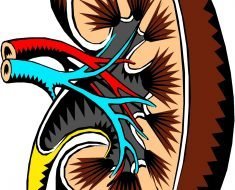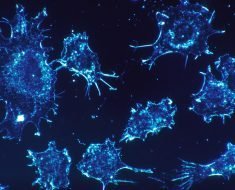Scientists from the Max Planck Institute and EPFL have developed a new type of biosensor able to precisely quantify metabolites using a single drop of blood. The accuracy and simplicity of the procedure could make it a tool of choice for diagnosing and monitoring several diseases.
Diseases or injuries can result in dramatic changes in the blood levels of metabolites, which are chemical compounds produced by the body’s metabolism. For example, an increase in the level of the amino acid phenylalanine in the blood is characteristic of the genetic disorder phenylketonuria (PKU). Phenylalanine levels in infants suffering from PKU need to be controlled through diet to avoid irreversible brain damage. It is therefore essential to be able to regularly monitor phenylalanine levels in the blood.
However, such monitoring currently requires blood samples to be sent to laboratories, and the results take several days to reach the patient. This delay often complicates disease management for PKU patients and their physicians. The treatment of numerous diseases could be improved if the blood concentration of disease-relevant metabolites were monitored at the point of care – ideally by the patient.
To address this problem, a team of scientists led by Professor Kai Johnsson of the Max Planck Institute for Medical Research (MPIMR) in Heidelberg and EPFL’s Laboratory of Protein Engineering has developed a way to measure metabolite concentrations in small blood samples within minutes. The approach was validated with patients from the Heidelberg and Lausanne University Hospitals. The research was published today in Science.
Molecular engineering
“We introduce a fundamentally new mechanism to measure metabolites through blood analysis,” says Qiuliyang Yu, the first author of the paper and a scientist at the Department of Chemical Biology at the MPIMR. “Instead of miniaturizing available technologies, we developed a new molecular tool.” The tool is a light-emitting protein that changes color in the presence of the reduced cofactor nicotinamide adenine dinucleotide, known to biochemists by its acronym NADPH. This molecule can be produced in an enzyme-catalyzed reaction specific to the metabolite of interest, which means that the metabolite concentration can be determined by analyzing the color of the emitted light. Using different enzyme-catalyzed reactions, the same sensor can carry out quantitative assays of various metabolites, such as phenylalanine, glutamate and glucose.
Fast and accurate
In practice, the procedure is quite simple. In the case of phenylalanine, a drop of blood is taken from the patient through a painless finger prick. A fraction of the blood sample is then added to a reaction buffer and applied to paper containing the biosensor. When phenylalanine is consumed and NADPH is produced, the light emitted by the sensor changes color from blue to red – a change that can be detected by an everyday digital camera or smartphone. The change in color is then used to calculate the phenylalanine concentration.
Source: Read Full Article





